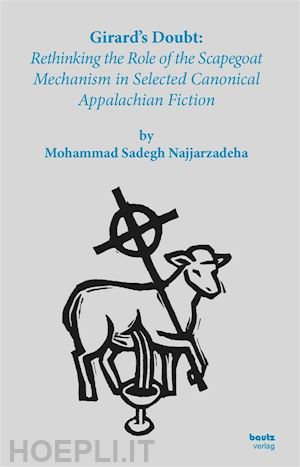Die Mehrheit der Forschung zu Girards Theorien, wie „mimetisches Begehren“, „interne und externe Vermittlung“ und „Erwerbsrivalität“, geht im Allgemeinen davon aus, dass Girard den „Sündenbockmechanismus“ als eine Art Segen oder gesegnete Gewalt ansieht, die in den andauernden Erwerbsrivalitäten entwurzelt werden könnte und den Fluss der Gewalt behindert. Diese Studien sind nicht irrend, da Girard seine Theorien in Verbindung mit der Literatur in seinem Meisterwerk Deceit, Desire, and the Novel aufgegriffen, erklärt und erprobt hat.
Jedoch glaube ich, dass diese Studien eine wesentliche Änderung in Girards Theorie übersehen haben, die ich als einen „nachträglichen Einfall“ in seiner Studie über den Sündenbockmechanismus bezeichnen würde. Girard modifiziert seine Theorie stillschweigend, indem er Zweifel an der „konstruktiven Funktion“ jedes Opfers nach der Kreuzigung Jesu Christi aufkommen lässt, sei es erzwungen oder freiwillig. Dieser „Anflug von Ungläubigkeit“ hinsichtlich der Wirksamkeit des Sündenbockmechanismus wird sogar noch durch den Schweizer Theologen Raymund Schwager in seinem Hauptwerk Muss es Sündenböcke geben? unterstützt. Ich wage es, diesen gleichen Hauch von Ungläubigkeit „Girards Zweifel“ zu nennen und beabsichtige, diesen in ausgewählten Werken der Appalachenliteratur aus den 1920er bis 1970er Jahren zu untersuchen. Diese Studie untersucht die Effizienz des „Sündenbockmechanismus“ in sechs Romanen von drei Autoren aus dem amerikanischen Süden: William Faulkner, Flannery O’Connor und Cormac McCarthy. Die Arbeit beginnt mit einer Einführung in die Geographie, Geschichte und Literatur des Südens. Darauf folgt ein Überblick über Girards Ideologie und Methoden.
Im ersten Kapitel konzentriere ich mich auf die Beziehung zwischen dem Sündenbockmechanismus – in Form von Opfermord – und Afroamerikanern, indem ich Faulkners The Sound and the Fury und Sanctuary untersuche. Im zweiten Kapitel analysiere ich O’Connors Wise Blood und The Violent Bear It Away, um zu untersuchen, ob die Vorstellung von gewalttätiger Gnade oder soteriologischem Opfer notwendigerweise zu Glückseligkeit führen würde. Für das letzte Kapitel habe ich McCarthys Outer Dark und Child of God ausgewählt, um den bürgerlichen strafrechtlichen Sündenbockmechanismus zu untersuchen, der von der Gesellschaft entwickelt wurde, um den Fluss der Gewalt zu kontrollieren.
The prevailing scholarship on René Girard’s theories—such as “mimetic desire,” “internal and external mediation,” and “acquisitive rivalry”—largely interprets his concept of the “scapegoat mechanism” as a kind of redemptive or sanctified violence capable of curbing the perpetuation of conflict. While these interpretations are not entirely misplaced, given that Girard originally presented and tested these ideas within the framework of Western literature in his seminal work Deceit, Desire, and the Novel, they tend to overlook a crucial revision in Girard’s thought. I propose that what I call Girard’s “afterthought” subtly revises his earlier theory by casting doubt on the “constructive function” of any form of sacrifice—be it coerced or voluntary—following the Crucifixion of Jesus Christ. This nuance is further reinforced by Swiss theologian Raymund Schwager, who accentuates this “tinge of incredulity” regarding the efficacy of the scapegoat mechanism in Must There Be Scapegoats? Thus, I venture to label this skepticism as “Girard’s Doubt,” and aim to explore its presence in selected Appalachian literature from the 1920s to the 1970s. This study scrutinizes the effectiveness of the scapegoat mechanism in six novels by three prominent Southern American authors: William Faulkner, Flannery O’Connor, and Cormac McCarthy. It opens with an overview of the American South’s geography, history, and literary tradition, followed by a detailed exposition of Girard’s ideological framework and methodology. In the first chapter, I examine the role of the scapegoat mechanism, particularly in the form of sacrificial lynching, and its relationship to African Americans in Faulkner’s The Sound and the Fury and Sanctuary. The second chapter delves into O’Connor’s Wise Blood and The Violent Bear It Away to determine whether the notion of violent grace or sacrificial salvation invariably leads to spiritual fulfillment. The final chapter focuses on McCarthy’s Outer Dark and Child of God, exploring the civic penal scapegoat mechanism employed by society as a means of controlling violence.
Sadegh Najjarzadeha completed his doctoral dissertation in English Literature, with a specialized focus on American Studies, at Göttingen University, Germany. His scholarly work applies René Girard’s philosophical framework to the analysis of 20th-century Southern U.S. literature, culminating in the coining of the term “Girard’s Doubt”—a profound examination of the limitations of sacrifice in breaking the cycle of violence. His master’s thesis, titled The New Idol of Postmodern America, critically engages with the rise of consumerism, drawing on Zygmunt Bauman’s theories to interrogate postmodern American novels.













